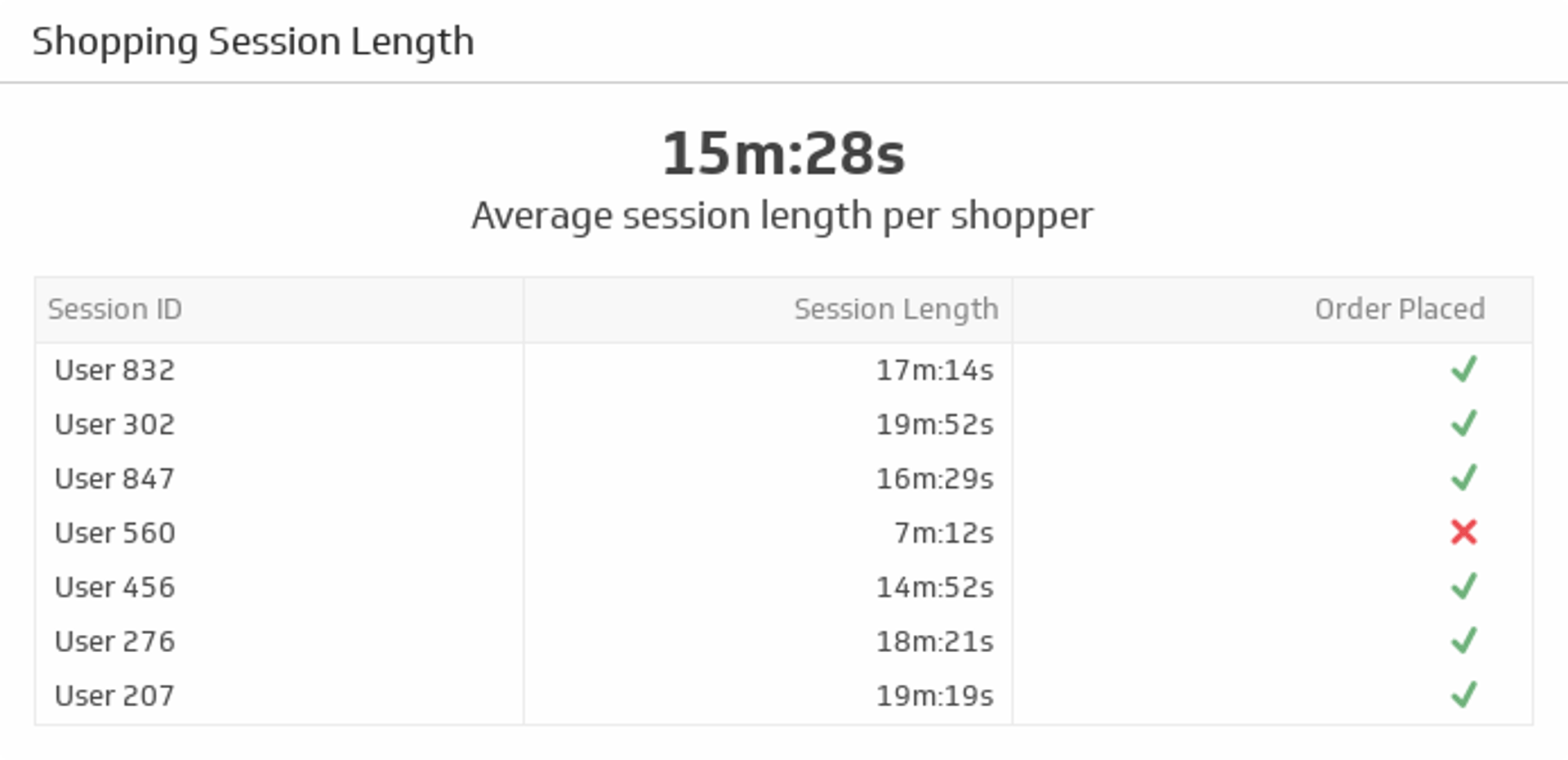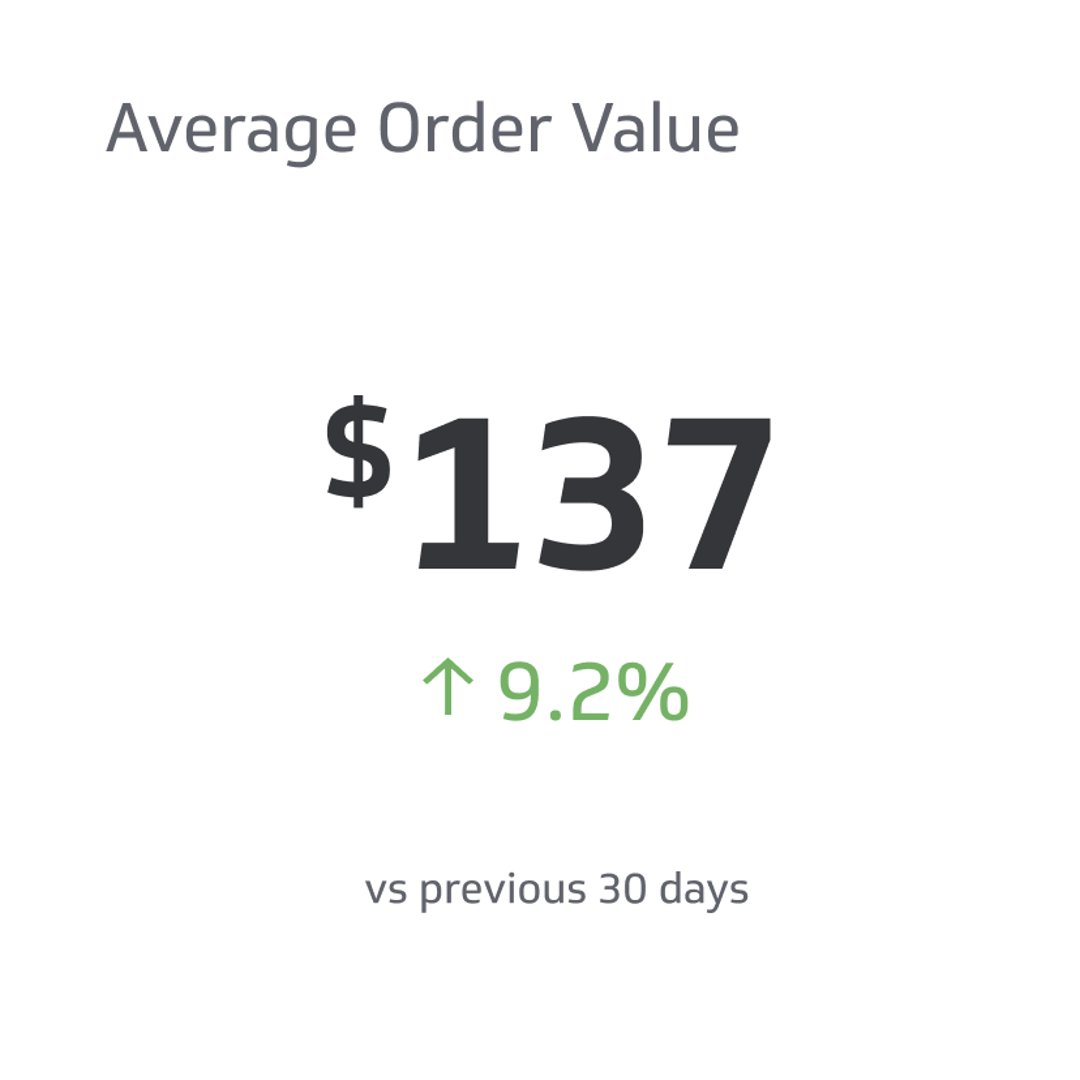Shopping Cart Conversion Rate
Turn more shopping carts into completed orders.
Track all your Ecommerce KPIs in one place
Sign up for free and start making decisions for your business with confidence.

What is Cart Conversion Rate?
The Cart Conversion Rate is a key performance indicator (KPI) that measures the percentage of shopping carts initiated on your eCommerce site that result in a completed order. In simple terms, it tells you how many potential buyers actually follow through with a purchase after adding items to their cart.
It’s one of the most important metrics for an online store to track because it directly reflects the efficiency of your checkout process and its ability to turn interested shoppers into paying customers.
Why should you track your Cart Conversion Rate?
Tracking this KPI is not just about monitoring sales; it’s about understanding customer behaviour and pinpointing friction in your sales funnel. A low Cart Conversion Rate often signals that something in the checkout process is turning buyers away.
For store owners and online sales managers, a dropping rate is a red flag that could be caused by:
- Unexpected Costs: High shipping fees or taxes revealed only at the end.
- A Complicated Process: Too many steps, required account creation, or confusing forms.
- Lack of Trust: Missing security badges or unclear return policies.
- Poor Performance: A slow or buggy checkout page.
By monitoring this metric, you can identify these issues, make data-driven improvements, and directly increase your revenue.
How do you calculate Cart Conversion Rate?
The formula for Cart Conversion Rate is:
(Total Number of Completed Orders / Total Number of Shopping Carts Created) x 100
For example, if 500 shopping carts were initiated in a month and 350 of those resulted in a completed purchase, your Cart Conversion Rate would be 70%.
(350 / 500) * 100 = 70%
What is a good Cart Conversion Rate?
While an ambitious target might be 85% or higher, a “good” Cart Conversion Rate can vary significantly based on your industry, product type, and price point. Instead of aiming for a single number, the goal is continuous improvement.
Start by benchmarking your current rate and focus on making incremental changes to increase it over time. Even a small lift in this metric can have a major impact on your bottom line.
How to improve your Cart Conversion Rate
If your rate is lower than you’d like, don’t worry. Here are some proven strategies to reduce cart abandonment and encourage more completed orders:
- Be Transparent with Costs: Display all costs, including shipping and taxes, upfront. Surprises are one of the biggest deal-breakers at checkout.
- Simplify the Checkout Process: Remove unnecessary fields and steps. Offer a guest checkout option so users don’t have to create an account.
- Offer Multiple Payment Options: Include popular choices like PayPal, Apple Pay, or Google Pay in addition to credit cards.
- Build Trust: Prominently display security badges, customer reviews, and clear return policies to reassure shoppers.
- Optimize for Mobile: Ensure your checkout process is seamless and easy to navigate on a smartphone.
The most effective way to stay on top of this KPI is by using a real-time reporting dashboard. By connecting your eCommerce platform and analytics tools, you can monitor your Cart Conversion Rate and other essential metrics in one place. With a tool like Klipfolio Klips, you can visualize trends, understand your performance at a glance, and share insights with your team to make faster, smarter decisions that grow your business.
Related Metrics & KPIs



